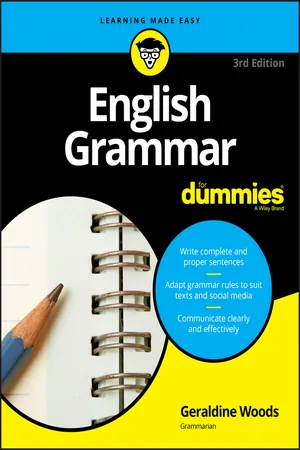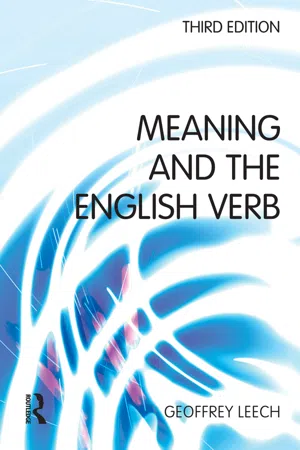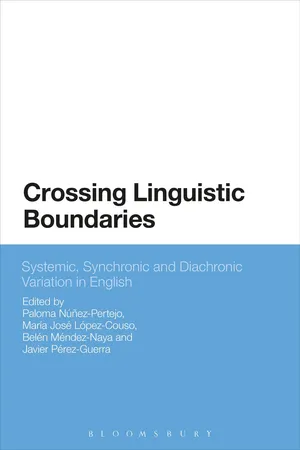Languages & Linguistics
Present Perfect Progressive
The present perfect progressive tense is used to indicate an action that began in the past, is still ongoing, and may continue into the future. It is formed by using "has/have been" followed by a present participle (-ing form of the verb). This tense is commonly used to emphasize the duration or continuity of an action or situation.
Written by Perlego with AI-assistance
Related key terms
Related key terms
1 of 4
Related key terms
1 of 3
9 Key excerpts on "Present Perfect Progressive"
- eBook - ePub
- Geraldine Woods(Author)
- 2017(Publication Date)
- For Dummies(Publisher)
remains = states of being existing at the same time; both verbs are in present tense) If two actions take place at the same time (or nearly the same time), use the same tense for each verb.Not Picture Perfect: Understanding the Perfect Tenses
Now for the perfect tenses, which, I must tell you, are not always used perfectly. In fact, these three tenses — present perfect, past perfect, and future perfect — may give you gray hair, even if you are only 12 years old. And they have progressive forms too! As with the simple tenses, each tense has a no-frills version called by the name of the tense: present perfect, past perfect, and future perfect. The progressive form adds an “ing” to the mix. The progressive is a little more immediate than the other form, expressing an action or state of being in progress. In this section, I give you some examples of these tenses so you can identify each. In the next section, “Using the Perfect Tenses Correctly ,” I go into detail about when and how to use each tense.Present perfect and Present Perfect Progressive
The two present perfect forms show actions or states of being that began in the past but are still going on in the present. These forms are used whenever any action or state of being spans two time zones — past and present.First, check out examples with plain present perfect tense:- Roger and his friends have spent almost every penny of the inheritance. (The verb have spent is in present perfect tense.)
- For years, Lulu’s best friend, Roger, has pleaded with her to stop robbing banks. (The verb has pleaded is in present perfect tense.)
- Roger has been studying sculpture for 15 years without learning any worthwhile techniques. (The verb has been studying is in the progressive form of the present perfect tense.)
- Lulu and Lola have been counting sheep all night. (The verb have been counting
- eBook - ePub
- Geoffrey N. Leech(Author)
- 2014(Publication Date)
- Routledge(Publisher)
The second statement describes a situation which the speaker regards as temporary; it is therefore more appropriate when Lynn and Josh have not been married very long. It also hints that the situation is liable to change.Because of the semantic element of duration, the Perfect Progressive is difficult to use with verbs which normally refer to momentary events: He has been starting his car. ?*He has been starting his book.The first of these makes sense, but reflects badly on the car’s reliability. The second sentence, on the other hand, seems nonsensical because it gives duration to something which cannot have duration: the only way to make sense of it is to construe it as an ironical remark with the interpretation ‘He has been meaning / trying / pretending to start his book’.77 Two further differences between the Present Perfect Progressive and the Present Perfect meaning state-up-to-the-present are:A As examples above show, the Progressive does not have to be accompanied by an adverbial of duration. The sentence ?*It has snowed without any adverbial qualification sounds very odd, while It has been snowing is perfectly acceptable.B The Progressive can be used with many verbs which cannot be used with the non-progressive Present Perfect in this sense, because they cannot act as ‘state verbs’: You’ve been reading that book for ages is allowable, but not *You’ve read that book for ages.Once again, however, there is virtually a free choice between the two forms in many contexts: Jack has been looking after the business for several years and Jack has looked after the business for several years are both acceptable.a. There seems to be a tendency to avoid the ordinary Present Perfect with verbs such as sit, lie, wait and stay, which generally refer to temporary states. Thus I’ve been sitting here all afternoon is more idiomatic than I’ve sat here all afternoon. The same preference is exercised even with very long periods of time: The inscription has presumably been lying here for thousands of years is more likely to be used than The inscription has presumably lain here for thousands of years - eBook - ePub
- (Author)
- 2011(Publication Date)
- Collins(Publisher)
perfect aspect .The two aspects of the verb can be joined so that we can talk about the duration and the completion of an action in the same verb phrase. See pp. 40-68 for more on tense and aspect.I have been a teacher for four years.He had lived in London for a year before coming to Sussex.James has helped out before.Sara and Scott had found their flat by then.I have been studying French for four years.I had been living in London for four years when I met him.Paula has been helping us this week.Present and past simple tenses
Simple tenses show moments in time, states that do not depend on time, and habitual or repetitive actions.It tastes good.Julie keeps a diary.Adrian went home at midnight.She heard a strange noise in the night.Rob usually walks to school.The present simple and the past simple tenses of regular verbs are formed by using the base form of the verb. See pp. 46-47 and 54-55.Continuous forms
Continuous forms show that something lasted or continued over a period of time.It is raining hard this morning.It was raining when we came out of school yesterday.I’m having dinner. Can I call you back?He was listening to the radio when he heard the news.The present continuous and the past continuous are formed from either the present or the past tense of the verb be + the present participle (or ‘-ing form’) of the main verb. See pp. 48-49 and 56-57.Perfect forms
The present perfect shows that an action is completed but that it still has some importance in the present time.Ken has walked all the way from the station. (…and he’s tired.)He has never visited me. (…and I’m feeling neglected.)She has missed - eBook - ePub
- Geraldine Woods(Author)
- 2015(Publication Date)
- For Dummies(Publisher)
they in these rows. To the first column, I could have added many nouns – all the nouns that name one person, place or thing. To the second column, I could have added every plural noun in the dictionary. What a heavy book this would be! I inserted only the pronouns in the last rows. Remember to use these forms of the verb with singular and plural nouns.To find out how well you know the forms of present perfect tense, fill in the following table. The first column tells you which verb you’re working with. The second column explains whether you want the present perfect or the Present Perfect Progressive. The third column contains the word that pairs with the verb.VerbPresent Perfect or Present Perfect Progressive?Paired with?Verb Formspill present perfect it chase Present Perfect Progressive dogs purchase present perfect Oliver amaze present perfect you sleep Present Perfect Progressive I discuss present perfect reporter meet Present Perfect Progressive executives Here are the answers: has spilled, have been chasing, has purchased, have amazed, have been sleeping, has discussed, have been meeting.In this section, I chose regular verbs to show you the present perfect tense. Unfortunately, many verbs are not regular. Read ‘Breaking the Rules: Irregular Past Forms ’ later in this chapter to discover some common irregular forms.When to use present perfect tense
Have a look at these examples of present perfect tense. I placed additional information in brackets after each example: this information makes the order of events clear.- Alan has climbed many mountains. (Some of the climbing happened in the past, but Alan has not given up this hobby. He continues to climb mountains in the present.)
- Miles has been a good skier for many years. (He was a good skier in the past, and he is still a good skier.)
- Maria has labelled most of the packages. (Some have labels already, but others are on her desk, waiting to be labelled.)
- I have been giving you too much attention already! (This statement is made in the present, talking about past actions that continue to the present moment.)
- The slippery floor has caused
- eBook - ePub
Crossing Linguistic Boundaries
Systemic, Synchronic and Diachronic Variation in English
- Paloma Núñez-Pertejo, María José López-Couso, Belén Méndez-Naya, Javier Pérez-Guerra(Authors)
- 2019(Publication Date)
- Bloomsbury Academic(Publisher)
Apart from ‘special’ interpretations in which temporary hair colouring may be used, (8b), asterisked by Kranich (2013: 9), is unacceptable: the distinction now seems to depend on whether the states express opinions or facts. The present-day extension, creeping as it is through a range of stative situations of limited duration in standard varieties of English, is only a recent phenomenon (dated only to the eighteenth century, according to Kranich 2013: 23), and is estimated by Kranich and others to reflect a later stage of grammaticalization, in which the present-day stative contexts are temporally limited. According to Bybee, Perkins and Pagliuca (1994), amongst others, the progressive may grammaticalize on to become a general imperfective marker, thus broadening the narrower or more restricted range of functions it once commanded. However, the temporal delimitations of today’s stative verbs call to question this possibility, according to Kranich (2013: 23).A shift along the noun-to-verb continuum would not preclude such a development, and the proposal of a continuum development allows quite feasibly for a reversal of direction, unlike a grammaticalization path, which is obligatorily unidirectional. If the progressive were grammaticalizing on to include other types of imperfectives, the grammaticalization path would appear to be bi-directional. The return to stative uses, albeit only those expressing subjective opinions of the speaker, is curiously reminiscent of the earlier stages we encountered in Old and Middle English, in which statives occurred quite happily with the progressive, e.g., in Middle English (Mustanoja 1960: 595, as cited in Ziegeler 1999: 79):(9) we holden on the Crysten feyth and are bylevyng in Jhesu Cryste (Caxton, Blanchardyn and Eglantine)‘we hold onto the Christian faith and believe in Jesus Christ’(10) They sayd thre men ansuerd them with grete fere that the paleyce and the ysle was belongynge unto the Kynge of Fryse. (Caxton, Blanchardyn and Eglantine)‘They said three men answered them with great fear (saying that) the palace and the isle belonged - Michelle Maxom(Author)
- 2010(Publication Date)
- For Dummies(Publisher)
Very often we can see the result of a recent action because of a visible change. We often use ‘just' and ‘recently' in these sentences but it's important to point out when to put these words in a sentence:Have you had a fall recently? Your arm is all bruised.I'm blushing again. Jason has just walked in.Acting in the Present Perfect ContinuousPeople use the present perfect simple tense for actions that run from the past to the present and for recent changes. The present perfect continuous tense is used for the same two purposes when you want to stress the duration of time a bit more than usual.Very similar to the present perfect simple, the present perfect continuous includes ‘have' or ‘has' and a past participle. However, with this tense the past participle is always ‘been' and a gerund follows:He/she/ it has been singing.You/we/they have been waiting.The negative construction adds not (or n't ) after has or have and in the question form, has or have comes before the subject pronoun (I, you, we and so on):Has he been dancing again? No he hasn't been dancing today.Moving from the past until the presentUse this tense with the word for plus a period of time or the word since and a date or a point in time.I have been waiting for the bus for ages!What have you been doing since this morning?Showing recent changes When you can see the result of a recent action that was repeated or took a while to complete, use the present perfect continuous:I think that it has been raining in the last half hour. The pavement's wet.Have you been dieting recently? You look great.Use pictures as contexts for showing the results of recent actions for both the present perfect simple and present perfect continuous and have students guess the cause. For example, a picture of a man who's out of breath can generate sentences such as:- eBook - ePub
- Otto Jespersen(Author)
- 2013(Publication Date)
- Routledge(Publisher)
swollen glands.(13) Two verbs form their Preterits from a different root altogether:be, am, is, are —was, were —been.go —went —gone.Tense-Phrases
23. 31 . Besides the two uncompounded tenses, Present and Preterit, we must recognize two tense-phrases, namely, the Perfect, formed by means of the present tense of the auxiliary have + the second participle: I have written, he has written, etc., and the Pluperfect, formed by the preterit of the same auxiliary and the second participle: I had written, he had written, etc.These tense-phrases go back to very old times. Originally have here had its full meaning 'possess, hold': I have caught the fish = `I hold (have) the fish as caught' (cp. the modern "There, I have you beaten"). Afterwards this meaning was lost sight of, and have came to be a mere grammatical instrument (auxiliary) to mark time-relation; thus it became possible to use it with all kinds of verbs, even those in which have as originally used would give no sense: I have lost (thrown away, forgotten, seen) the key. With intransitive verbs, too, have is now the usual auxiliary, but formerly I am come, I am become, etc., was used very extensively (23. 5).23. 32 . By the side of these tenses and tense-phrases we have expanded forms:the Expanded Present: am writing, the Expanded Preterit: was writing, the Expanded Perfect: have been writing, the Expanded Pluperfect: had been writing.On the use of the expanded forms, see 24. 7.On the use of will and shall to denote future time, see ch. xxv .Use of the Present Tense
23. 41 . The Present Tense is first used about the present time.In the strict sense as a point without any dimension the present has little practical value, and in the practice of all languages " now " means a time with appreciable duration, the length of which varies greatly according to circumstances, the only thing required being that the theoretical zero-point falls within the period alluded to. This applies to cases like: - eBook - ePub
TEAS Test Strategy!
Winning Multiple Choice Strategies for the Test of Essential Academic Skills
- Complete Test Preparation Inc.(Author)
- 2015(Publication Date)
- Complete Test Preparation Inc.(Publisher)
2. Examine the choices and eliminate any obviously incorrect answers. Choice A, “am seeing” is incorrect because it is a continuing action, i.e. in the present; it also doesn’t use a form of ‘have’. Choice B is grammatically incorrect.Choice C is tells of something that has happened in the past and is now over. Best choice so far.Choice D is grammatically incorrect. 3. The Present Perfect Progressive Tense How to Recognize This TenseWe have been seeing a lot of rainy days.I have been reading some very good books.About the Present Perfect Progressive TenseThis tense expresses the idea that something happened (or didn’t happen) in the relatively recent past, but the action is not finished. It is used to express the duration of the action.NOTE:Present Perfect Progressive Tense Construction This tense is formed by using the present tense of the verb “to have,” plus “been,” plus the present participle of the main verb. Sample Question Bill ______________________ there for two hours. a. sits b. sitting c. has been sitting d. will sat How to Answer This Type of Question 1. First examine the question for clues about the time frame.The present perfect speaks of an action that happened sometime in the past, but this action is finished. In the Present Perfect Progressive tense, the action that started in the past is still going on.“For two hours” tells us that the action, “sits,” is continuous up to now, and may continue into the future.Note this sentence could also be the simple past tense, Bill sat there for two hours. Or the future tense, Bill will sit there for two hours. However, these are not among the options. 2. Examine the choices and eliminate any obviously incorrect answers.Choice A is incorrect because it is the present tense. Choice B is incorrect because it is the present continuous. Choice C is correct . “Has been sitting” expresses a continuous action in the past that isn’t finished. Choice D is grammatically incorrect.4. The Present Progressive Tense - eBook - ePub
- John B. Butt, Carmen Benjamin, Moreira-Rodriguez Antonia(Authors)
- 2018(Publication Date)
- Routledge(Publisher)
17.4 .(d) Spanish resembles English and differs from French, German and Italian in having a full range of continuous forms: está lloviendo ‘it’s raining’, estabas pensando ‘you were thinking’, he estado comiendo ‘I have been eating’. However, the similarity to the English progressive forms (‘I’m going’, ‘you’re waiting’, etc.) is misleading; see 19.1.2 for details.(e) The difference in meaning between the preterite hablé ‘I spoke’ and the perfect he hablado ‘I have spoken’ is respected in Spanish and English, but blurred or lost in spoken French, Italian and German. However, the relationship between the Spanish tenses is not exactly the same as between ‘I spoke’ and ‘I have spoken’: see particularly 18.2. Use of the perfect tense is also much affected by regional variations.17.3 Uses of the present indicative tenseFor the use of the present indicative in conditional sentences, e.g. si sales, compra pan ‘if you go out, buy some bread’, see 29.1 2 . For the use of the present indicative as a future tense see 17.6.3 .17.3.1 Present indicative tense to indicate timeless or habitual events that still occur The present indicative tense is used to express eternal or timeless truths, or habitual states or events that are still occurring in the present:
(ES, Mex., dialogue. See 30.2.1 note 3 for this use of me)Llueve mucho en Irlanda It rains a lot in Ireland Fumo más de cuarenta al día I smoke more than forty a day Marta es venezolana Marta’s Venezuelan Tengo tarjeta de crédito I have a credit card Me deprime comer sola (CMG, Sp.) Eating on my own depresses me Yo me sé de memoria tus chistecitos I know your feeble jokes by heart (1) As in English, use of a continuous tense for a habitual event can make it in some way unusual, surprising or temporary, i.e. not necessarily a habit: Alicia estaba bebiendo más últimamente (GZ, Mex.) ‘Alicia was drinking more lately’, estás fumando mucho
Index pages curate the most relevant extracts from our library of academic textbooks. They’ve been created using an in-house natural language model (NLM), each adding context and meaning to key research topics.
Explore more topic indexes
Explore more topic indexes
1 of 6
Explore more topic indexes
1 of 4








